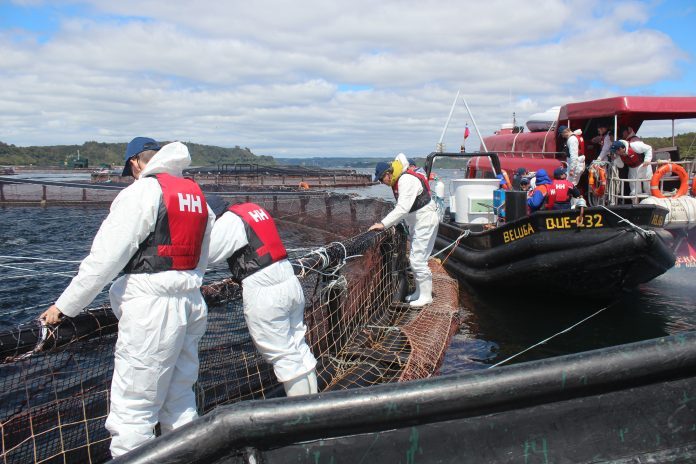Chilean industry advocacy, SalmonChile, has said the toxic Red Tide phenomenon is not caused by the country’s salmon farms or the density of its fish, a remark seen as a rebuttal to senator who earlier this week wanted “serious discussion” from the industry on the causes of harmful algae blooms, or HABs.
Despite wide-ranging studies in Chile and around the world that clearly reveals HABs, especially in Chile, clearly “arrive” in coastal regions, the though persists that they’re “created” locally. Satellite photos, however, confirm their existence offshore before moving in to wreak havoc with both finfish and shellfish.
Read Chilean senator looks to industry for algae-bloom answers
Read Chilean officials log massive salmon losses
“It has been scientifically studied on many occasions and the results (presented in Chile in the summer of 2016) is clear — there is no relationship between the salmon industry and HABs,” Arturo Clement, president of the association, was quoted by Aqua as saying. He said he’d be willing to have the chairman of the senatorial fisheries committee, Raindranath Quintero, in for a seminar explaining the phenomenon.
Quintero this week hinted he new of Rid Tide’s true origins while at the same time seeming not to know.
“As far as we know, a damaging algae bloom occurred in-line with a temperature increase and less oxygen in the water, and when the number of salmon increases, the temperature increases and oxygen is reduced,” Quinteros was quoted by SoyChile as saying.
In other comments, he said, “The threat of a new algae bloom, especially Red Tide, remains latent in the southern part of the (salmon-producing regions),” suggesting he understood the current science, which holds that algal blooms linger offshore before periodically sweeping in to cause significant damage.
Clement, for his part, said the industry’s warning system for HABs is far better that in was in 2016. To prevent spreading the algae and illness, the water around fish transfers, too, are now being monitored, especially during harvesting and during well-boat activity.

